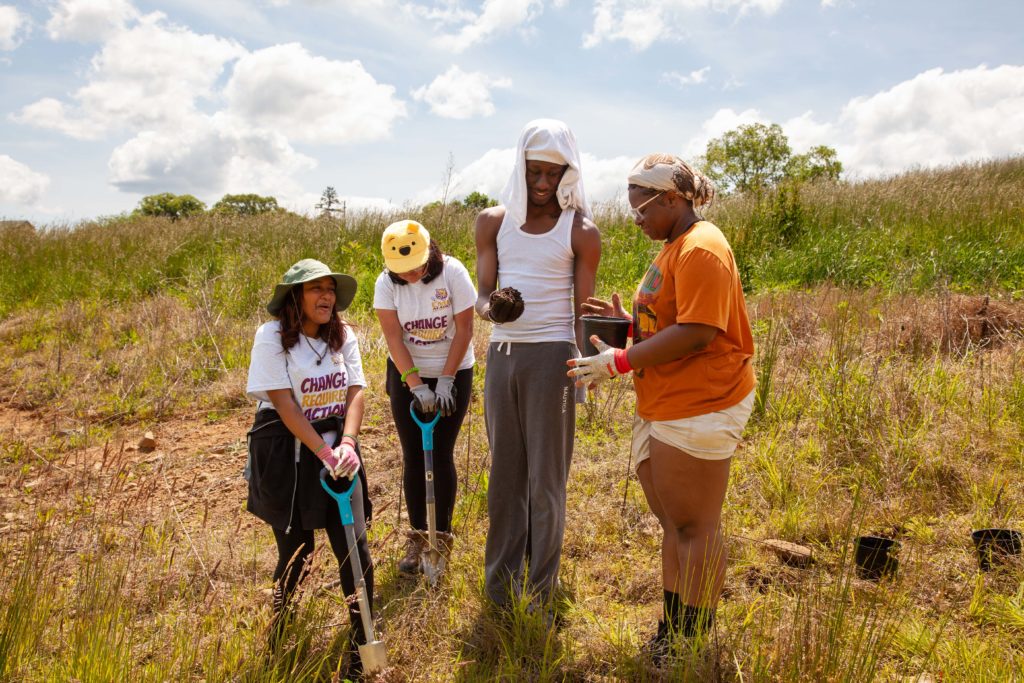VWL Article Release: When A Farm Becomes a Classroom…”
When a Farm Becomes a Classroom: Cultivating Conservation Leaders at the Eldon Farms Field Day
By Caitlyn Dittmeier, Communications and Development Assistant, Smithsonian’s Virginia Working Landscapes
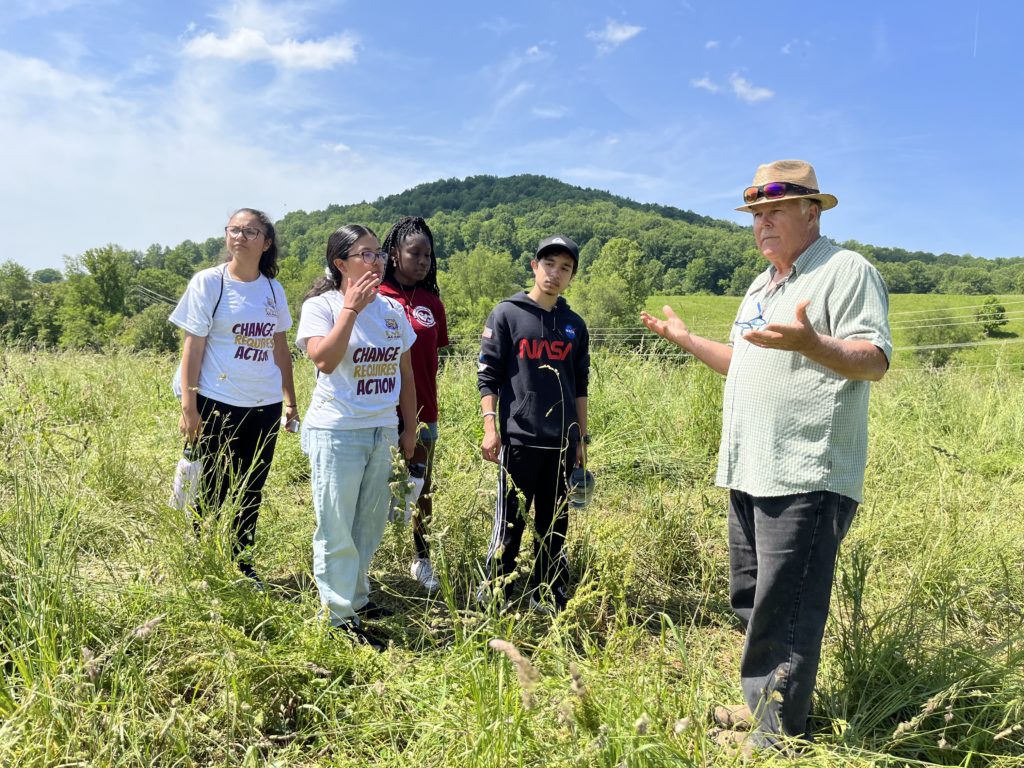
At Smithsonian’s Virginia Working Landscapes (VWL), we know that engaging communities in conservation is key to improving the health and resiliency of our local landscapes. More specifically, finding new ways to involve youth in conservation and imbue them with a greater sense of land stewardship is how we ensure positive, long-lasting change. For students living in urban and suburban areas, however, stepping onto the amazing landscapes we work on is not always feasible. To bridge this gap, VWL organized a high school field day at Eldon Farms in Rappahannock County, VA, in partnership with the Smithsonian’s Earth Optimism Youth Action Leadership Program, Howard EcoWorks, The Piedmont Environmental Council, The Akre Turtle Lab at the Smithsonian’s National Zoo and Conservation Biology Institute, as well as farmers and naturalists from the local area.
According to VWL’s Justin Proctor, lead organizer of the field day, “Farms are the perfect classrooms, as opportunities for experiential learning are endless!”
Spanning over 7,000 acres of working land, Eldon Farms is an ideal place for discoveries in nature. On a beautiful “bluebird” morning in May, the farm showcased its full potential as four high school groups from Baltimore and towns in eastern Maryland arrived for an unforgettable experience, adventuring through a mosaic of farmland habitats, including hayfields, fallow fields, cattle pastures, wetlands, and ponds. At each habitat, students met with environmental professionals who exposed them to conservation themes through hands-on activities.
At the sustainable agriculture station, for example, many students experienced their first-ever encounters with livestock as Mike Sands, Owner/Operator of Bean Hollow Grassfed in Flint Hill, VA, showed them how cattle can help manage grassland habitats for the benefit of other wildlife, such as soil microbes, insects, and birds. By visiting other stations, students were able to connect these agricultural lessons to the different ways that scientists study native species to help inform biodiversity-friendly land management practices. They also gained insights into fieldwork by trying out a few research methods!

At the insect station, they learned how to safely collect and identify insects from the tall grasses. “Sweep-netting,” as it’s called, quickly became one of the day’s favorite activities. Students deepened this exposure to field ecology when Max Earle from the Akre Turtle Lab explained how scientists monitor Box Turtles, a species that faces threats from mowers, road crossings, and other human activities. Ornithologist Dr. Amy Johnson explained why researchers also track the movements of grassland birds on working lands. Students got a rare chance to see many of these birds first-hand, as Dr. Johnson and Eldon’s Naturalist Patty Lane took them bird watching by a pond. Eyes widened when Dr. Johnson uncovered a clutch of Red-winged Blackbird eggs hidden in a nest along the water’s edge. “They’re so tiny!” one student exclaimed, while another added, “I’ve never seen this up-close before!”
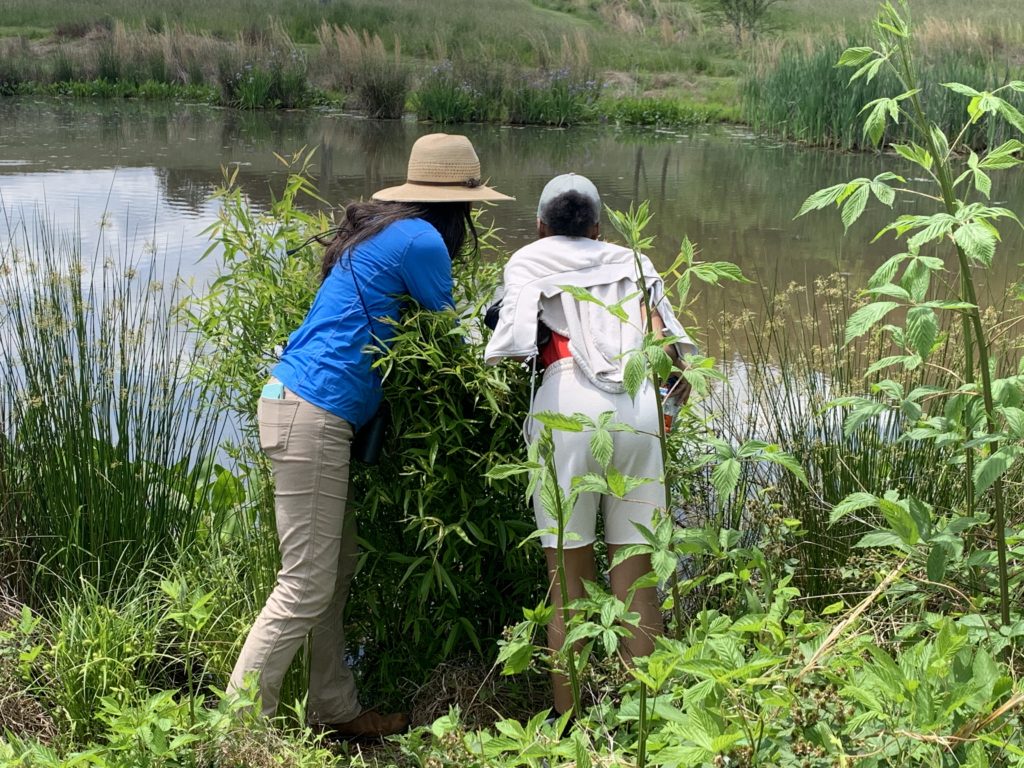
“Having hands-on opportunities to learn about conservation can really be life-changing! Many people are unaware of the threats that grassland birds face, and so being able to see those species up-close builds a connection with at-risk birds that can otherwise be difficult to achieve,” said PEC’s Wildlife Habitat and Restoration Coordinator October Greenfield. Greenfield co-hosted a station with Avian Conservationist Alan Williams to show students how nest-boxes help researchers monitor local populations of cavity-nesting birds like American Kestrels and Barn Owls. Curiosity overtook squeamishness as students dissected Barn Owl pellets gathered from below a nearby box. One teacher, Matthew Biegel, said that dissecting pellets in the environment from which they came allowed his students to see the relationships among the owl, its diet, and the importance of protecting its habitat.
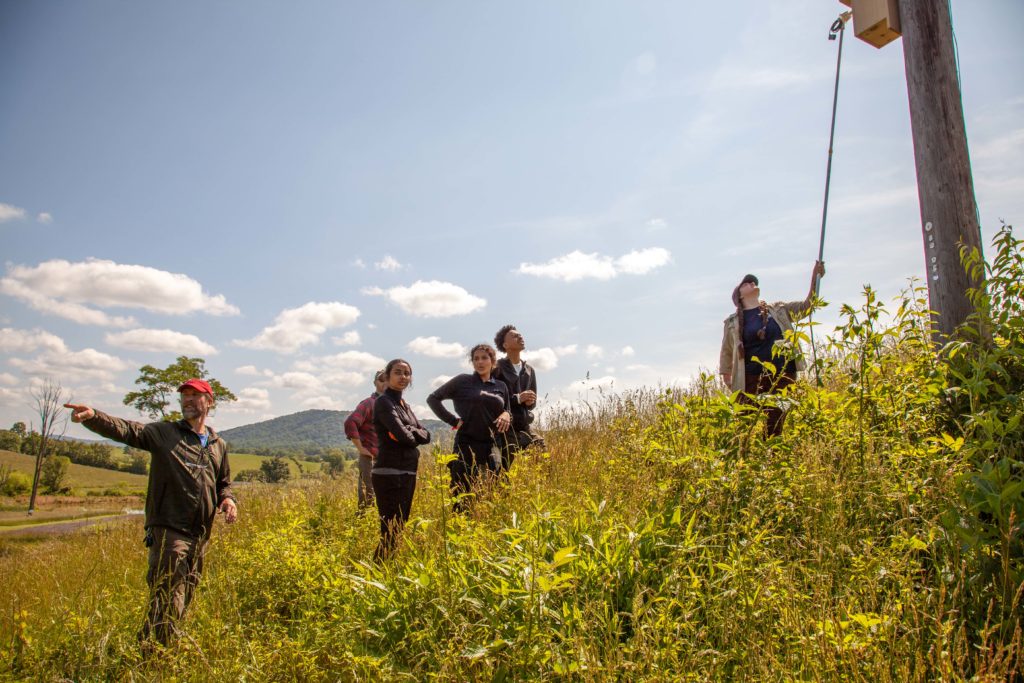
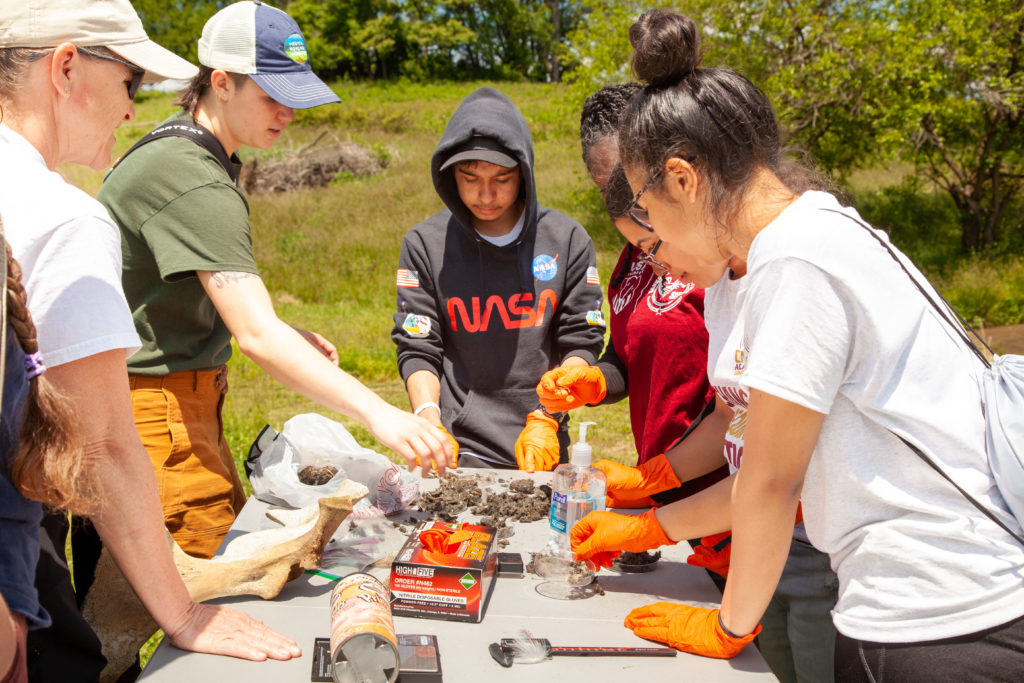
One of the main goals of the field day was to help students not only learn about conservation science, but also realize the many ways they can help move these efforts forward. One student told Dr. Johnson that hearing her say the word “ornithologist” for the first time opened her mind to an entirely new profession. Since the field day, the two have been corresponding about careers in conservation, how teens can get involved, and what resources are available to help them along the way.
Beyond considering career paths, students were excited to take what they learned at Eldon Farms home. “After sweep-netting,” explained VWL’s Botanist Technician Natalie Izlar, “some students said they were going to start looking around their neighborhoods for different bugs to identify!” Others couldn’t wait to bring their Barn Owl pellets home and show their families what they learned about grassland birds. One teacher, Brittany Gonzalez, and her students have been busy discussing the ways they can plant more native plants to support pollinators on their school properties.
“Conservation work can be done in everyone’s backyard,” emphasized Izlar – no matter one’s age, degree, or profession, anyone can play a role in protecting the environments we depend upon.
One activity that strived to heighten the students’ sense of place and environmental responsibility was the riparian buffer installation. With the help of PEC’s Rappahannock County Field Representative Laura O’Brien and PEC’s Tree Planting and Stewardship Coordinator Linnea Stewart, students planted 55 native shrubs and wildflowers around a pond at Eldon to support clean water and build critical habitat for beneficial insects, turtles, birds, and other wildlife.
At one point, a student paused during her planting to ask Stewart where the water in the pond was coming from. Pointing to a hillside in the distance, Stewart explained that the pond was spring fed; its water originated from rainwater high up in the Shenandoah Mountains, flowed through and over the surrounding landscapes, fed spring after spring, and continued to the Chesapeake Bay. As she explained this process, Stewart witnessed the young woman discover how water moves, and that by working together to protect even one pond, she and her peers were positively impacting water quality for everyone who shares in the watershed.
When asked what their passions and interests are, many students expressed that they wanted to make the world a better place for all our communities to live in. The VWL team strongly believes that one of the best places for students to build knowledge and skill sets for achieving these goals is on the farm. Moving forward, VWL and partners are excited to find new ways to bring students onto these landscapes and help them get involved in conservation through hands-on experiences.
“The more we get students out into nature to learn, the better the future looks,” said Proctor.
